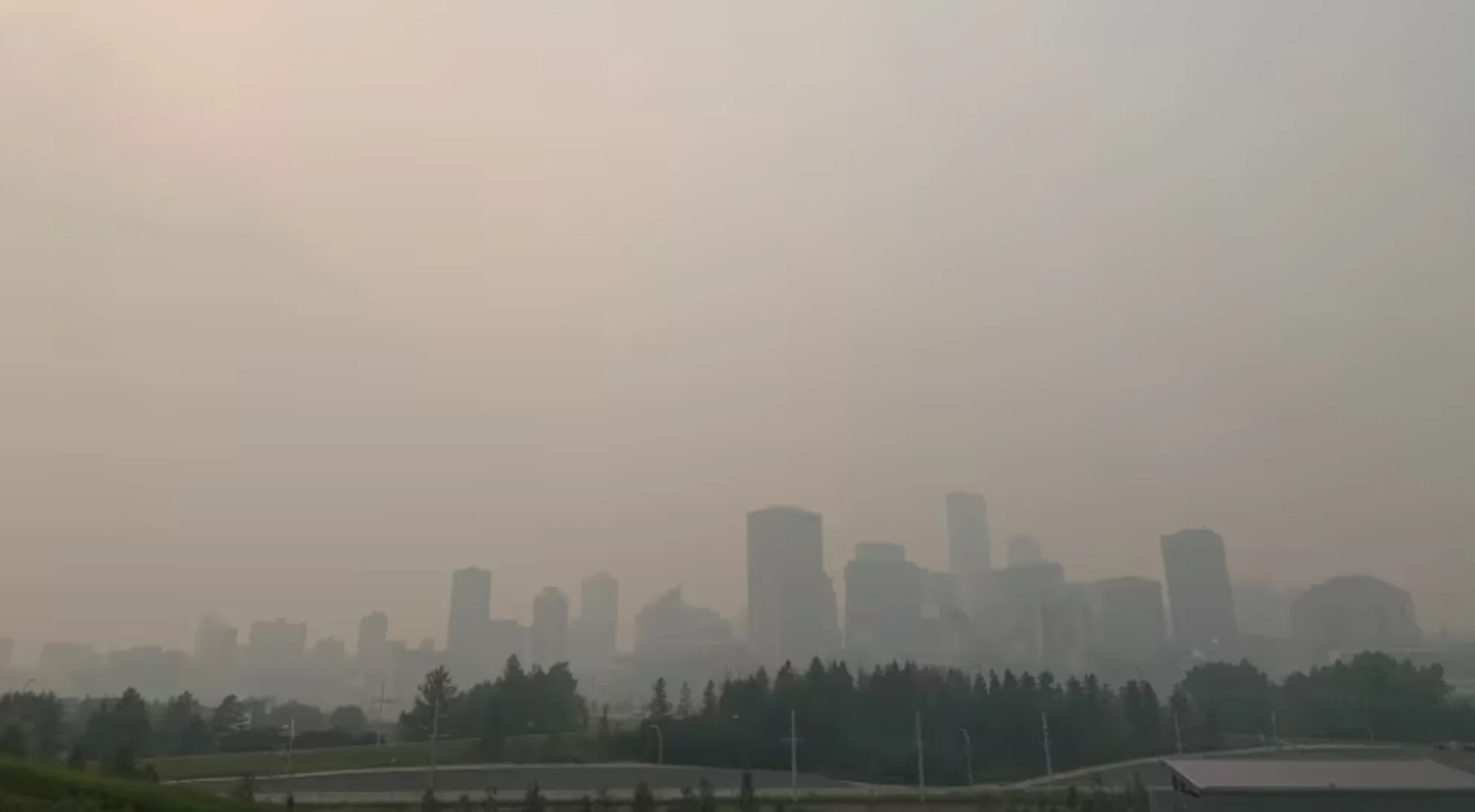
As haze lingers, Edmonton and Calgary break records for summer smoke
Visit The Weather Network's wildfire hub to keep up with the latest on the unprecedented wildfire season across Canada.
Long summer days choked with wildfire haze has made this the smokiest summer on record in Alberta's biggest cities.
Environment Canada data shows Edmonton and Calgary have set new records for "smoke hours," which are counted when the haze becomes particularly thick, reducing visibility along the horizon to 9.7 kilometres or less.
MUST SEE: Best practices to keep yourself safe from wildfire smoke
Records on smoke hours have been kept for more than 70 years. The previous record for both Edmonton and Calgary was set in 2018.
Between May and September of that year, Edmonton recorded 229 smoke hours. Calgary recorded 450 smoke hours during the same time frame.
This year, as of Sunday, Edmonton has recorded 244 smoke hours. Calgary has recorded 464 smoke hours so far this summer.
The totals for both cities are expected to rise as smoke continues to drift in from wildfires burning in B.C. and the north.
Smoky days ahead
Heather Pimiskern, a meteorologist with Environment Canada, said a shift in the winds will mean the same plumes of smoke that drifted across Alberta over the weekend will again pass over in the province in the coming days.
"Winds are expected to switch again overnight tonight, into tomorrow, to be from the southeast," Pimiskern said in an interview Monday.
"All the smoke that passed over us over the last 24 hours is expected to come back into us. So unfortunately, the air quality will continue to be poor over the next couple of days."
SEE ALSO: What to do with fridge full of food after long, wildfire-induced power outage
After days shrouded in smog, special air quality statements remain in effect for almost every part of the province. The advisories from Environment Canada caution that smoke pollution can be harmful to everyone's health, even at low concentrations.
The province spent the weekend under a blanket of smoke with air pollution measured at a 10-plus on the Air Quality Health Index (AQHI).
Developed by Health Canada, the system monitors the severity of air pollution by tracking fine particulate matter, ground-level ozone, and nitrogen dioxide. When the rating is high, people exposed to the smog face significant health risks.
The smoke moved into Alberta on Friday and despite initial forecasts that indicated the skies would clear by Saturday, the hazy conditions persisted, forcing many to cancel their long weekend plans and hunker down inside.
Some of the worst of the pollution is reaching Alberta's largest cities. Residents of Edmonton and Calgary woke up Monday to the pungent smell of fire and a haze that clouded visibility on local roads.
As of Monday, the Air Quality Health Index for Edmonton was rated at a 10, or high risk. In Calgary, the air pollution was also considered a high risk on the AQHI scale.
Pimiskern said the forecast suggests that the skies over Alberta should clear by the end of this week.
"However, the smoke is really hard to predict," she said. "There are so many factors that come into play, so we keep hoping that conditions will improve."
Environment Canada said air quality and visibility due to the wildfire smoke can fluctuate over short distances and can vary considerably from hour to hour.
People with lung disease, such as asthma, people with heart disease, older people, children, pregnant people and those who work outside are at higher risk of experiencing health effects, the agency said.
Environment Canada recommends the following:
If you or someone in your care experiences shortness of breath, wheezing, severe cough, dizziness or chest pains, stop outdoor activities and contact your health care provider.
If you are feeling unwell and experiencing symptoms, stay inside.
Keep your indoor air clean.
Keep your doors and windows closed if the temperature in your home is comfortable.
Take a break from the smoke by temporarily relocating or finding a place in your community with clean, cool air such as a library, shopping mall or community centre.
If you must spend time outdoors, a well-fitted respirator type mask that does not allow air to pass through small openings between the mask and your face can help reduce your exposure to fine particles in smoke.
Be sure to check on people in your care and those who may be more susceptible to smoke.
WATCH NOW: Rare 'fire tornado' caught on camera by B.C. wildfire crew
Thumbnail courtesy of Madeleine Cummings/CBC.
This article, written by Wallis Snowdon, was originally written for CBC News.









